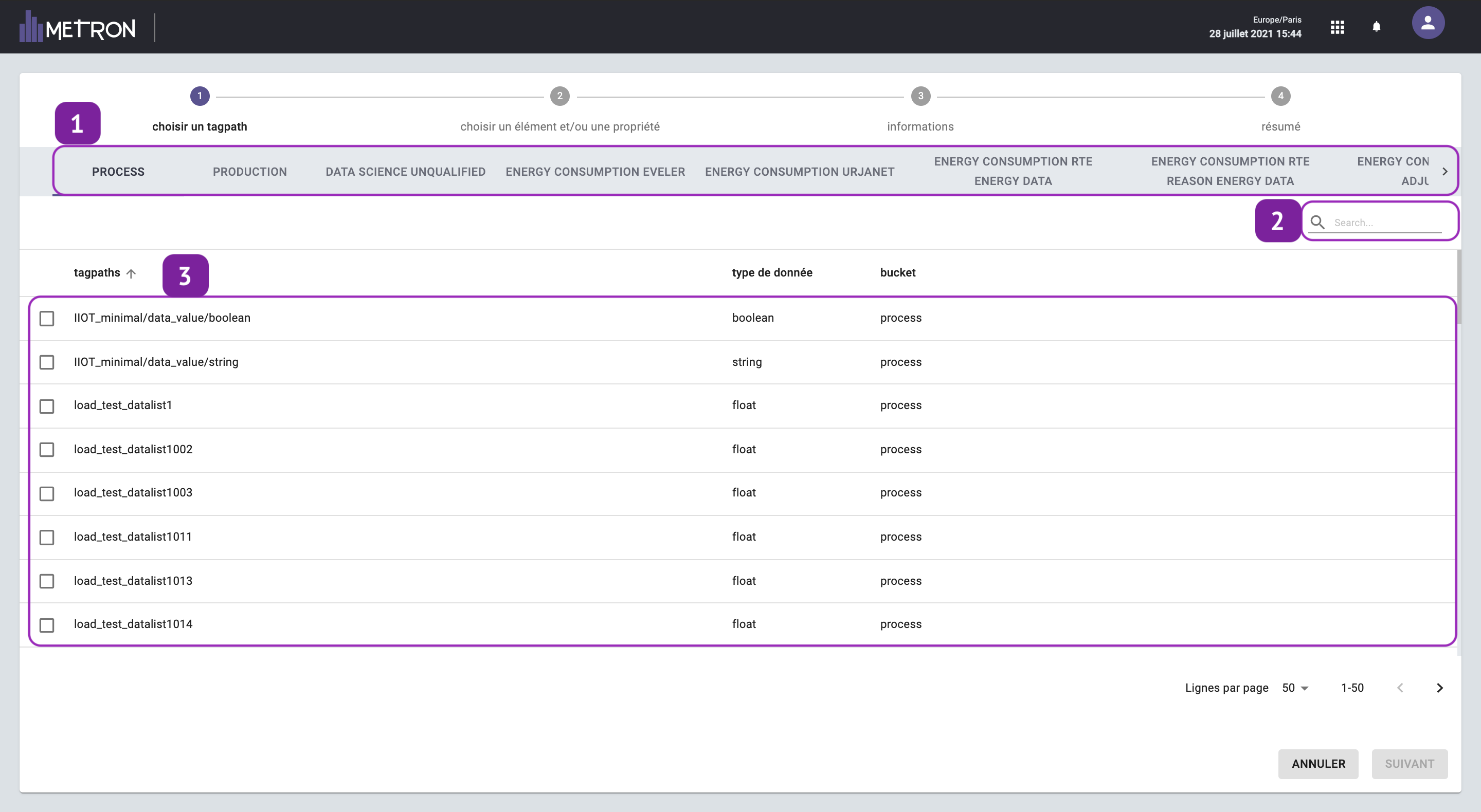Qualify and contextualize a tag
Learn how to qualify your raw data once you have imported it into your platform
Introduction
Why qualify a tag?
A tag is a piece of data raised into the METRON database. It can be of any type (from the industrial site, from a weather station, from calculations made by METRON).
To be able to view and use this tag in your platform, it must be qualified.
This action allows you to change your raw data into aggregated (processed) data.
Objectives
Qualifying your allows you to give certain characteristics to a raw tag (unqualified and non-contextualized), such as
- A name
- A unit
- (Optional - only for contextualization) A characteristic of interest (asset, energy flow, perimeter or energy use)
- (Optional - for contextualization only) A property
How to qualify a tag?
In the Data Source area, follow these steps to qualify a tag:

- Click on "Add":
- a) Qualify data: Data is qualified individually (one by one).
- b) Batch qualify data: This option allows you to qualify a large amount of data easily and quickly by downloading and completing the METRON template provided.
a. Qualify data
You will find on this page all the raw tags that are collected on the platform. The unit qualification allows you to qualify a single tag.

- Select the tag source. For example, if your tag comes from a sensor on site, the source will be "Process".
- Search a tag in your list with the search bar
- As a reminder, the Tagpath is the unique identifier of the tag assigned by METRON at the time of import into our databases.
- Select a tag to qualify it
Once your tag is selected, click on next to contextualize it. In this section, you can select the perimeter, the asset, the network or energy use associated with your tag in the tree structure and previously defined in the Mapping workspace.

This step is optional. If you have not defined your mapping beforehand, click directly on the next button. Attention, this series will not be contextualized and some processes will not be automated.
You will then arrive at the final qualification stage to:

- Give a name to your tag.
NB: it is under this name that it will now appear on the platform. - Select the unit of your tag
NB: Choosing a unit during the qualification phase will automatically assign this unit when displaying the tag in your Data Visualization workspace. - Assign a property: linked to your network or your machine. Ex: humidity, pressure, volume, etc.
- Choose your tag dynamic. Ex: Floating, string, boolean
- Choose the tag aggregation, i.e. the calculation that will be applied between the raw points in order to aggregate them together at a particular granularity and so speeding up the display time on the platform. This aggregation result is stored in a database called "Cache".
- Choose the interpolation, i.e. the value taken between two points: draw a straight line or a staircase.
- Preview the values of your tag.
Default: we recommend keeping the default aggregation or interpolation settings for your tag, unless you have a specific need for that tag.
- For example:
- A tag sending an incremental index should be configured as follows: aggregation "Difference", interpolation "Step"
- A tag sending a daily total energy balance (kWh) should be configured as follows: "Sum" aggregation, "None" interpolation
Once the qualification is validated, you can fully exploit this tag on the platform: display in real time, create alarms or create new calculated tags.
b. Batch qualify data
Batch qualify data is the most relevant for large lists of tags. You can directly use your own excel or CSV lists to qualify your tags in the platform, as long as the file respects the template imposed by METRON, including the following columns:
- Tagpath
- Unit
- Name
- Property